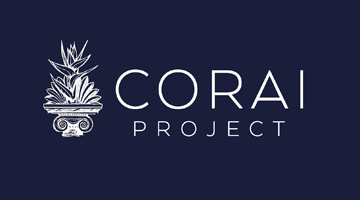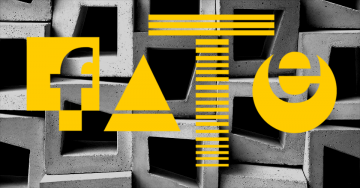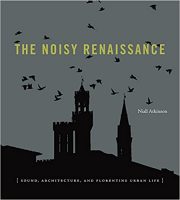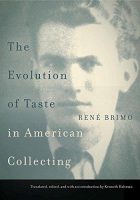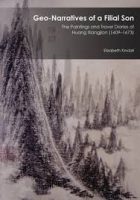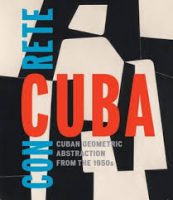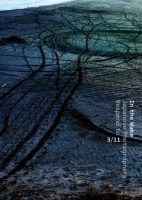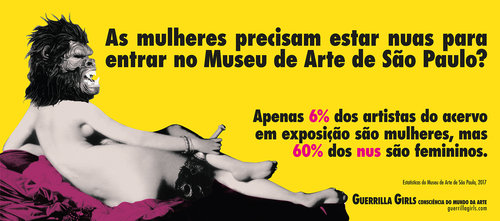CAA News Today
New in caa.reviews
posted by CAA — January 19, 2018
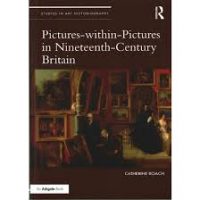
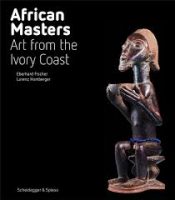
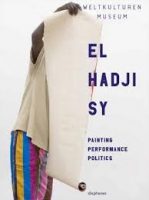
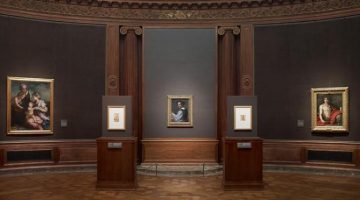
Tania Tribe discusses El Hadji Sy: Painting, Performance, Politics edited by Clémentine Deliss and Yvette Mutumba. Read the full review at caa.reviews.
Will Rea reviews African Masters: Art from the Ivory Coast edited by Eberhard Fischer and Lorenz Homberger. Read the full review at caa.reviews.
Andrea Korda examines Pictures-within-Pictures in Nineteenth-Century Britain by Catherine Roach. Read the full review at caa.reviews.
Robert Williams discusses Andrea del Sarto: The Renaissance Workshop in Action by Julian Brooks. Read the full review at caa.reviews.
An Interview with Andrea Iaroc, Founder and Executive Director of the CORAI Project
posted by CAA — January 18, 2018
Andrea Iaroc created the CORAI Project to help art historians, in particular those without the privileges to access professional networks and generous financial resources. For more than ten years, her passion for historical research, teaching, writing, and philanthropy have advanced her work in museums and other art institutions, and forwarded her understanding of non-profits and intentional community work. An iconographer at heart, her current independent research interests focus on cultural hybridity and identity art.
Joelle Te Paske, CAA media and content manager, spoke with Andrea to learn more about the work CORAI is doing, her thoughts on CAA, and fundraising for inclusive art history.
This interview has been edited for length and clarity.
Andrea Iaroc: I’ve been a member of CAA since 2007. I see the way the organization has moved in the past years—it’s definitely a different direction.
Joelle Te Paske: Most definitely. That’s part of the reason why I’m here, too.
AI: It used to be a little bit more traditional. That’s one of the things I’m focused on—moving art history away from that traditional foundation, [which is] very ivory tower. It’s exclusive and I wanted to change that in founding the CORAI Project.
It was frustrating as a woman of color—but, I admit that I do have privilege. I don’t have college debt, but I saw friends in school sometimes struggle with simple things, such as professors asking us to go to a gallery, or buy a membership to CAA for instance. The question was always: “Okay, do I use this money to pay for my books for this class, or do I …?” It was this thought in the back of my head, and those things happen because art history has been a “girls with the pearls” academic field. We still have that image problem.
JTP: Yes. That’s the stereotype.
AI: When you’re trying to do fundraising for art history, a lot of people ask: “What exactly are you doing, are you going to save the world?” It’s not a practical STEM field, but we need to equalize it in reflection of current sociocultural changes. We need to amplify the voices that have not been heard because of European ethnocentrism and patriarchy. The way that we experience the world, the way we grow up, our background—all inform the way we interpret things. That is important for me.
In August 2016, I finally managed to realize the idea of creating something new [the CORAI Project]—getting a logo, a mission, values, and building up a board. We’re just over a year old. CORAI stands for Creating Opportunities for Representing Art History Inclusively. Our logo features a heliconia plant, a South American Heliconia Bihai (even though I was born in Brooklyn, NY my parents are Colombian). The foundation of the logo is very Greco-Roman, but the heliconia is breaking through that ionic capital, moving up and breaking through. Our logo is pretty much what we want to do.

From the CORAI website: The Greek Ionic order is studied in every art history 101 class. It is part of classic architecture and, to this day, is used in governmental and certain religious buildings. It very much represents the Western roots of the field, as well as the palm that opens up on the background. Both Romans and Greeks were fond of foliage to adorn their capitals. In the middle, however, is a South American heliconia shooting upwards – transcending the heavy and old marble foundation. Design by Bella Hall.
JTP: I love that.
AI: Yes, it’s time to break through and do different things. [CORAI Project] gives away springboard grants, small grants to give a little ‘push’, to art historians who identify as PoC, people of color, in the state of Washington. So far, our first grantee back in the spring of 2017 used her money to go to the Rubin Museum of Art so that she could use their collections to complete her thesis.
JTP: That’s terrific.
AI: She was studying thangka paintings of Tibet [Tibetan painting using ground mineral pigment on cotton or silk]. She was the only person in the University of Washington, Seattle, doing this which therefore will change the records of art history in the university because she’s only one of two students this year that are graduating with a focus on Chinese art history.
The person that received the grant in fall 2017 is going to invest it in Japanese translation to ensure her thesis is correct. Although she’s faced resistance to her art historical Japanese art focus, she’s following through. One of the things that happens is that professors who do not have experience in what they call “non-western” arts, question PoC’s methodologies, settings, and interpretations because a traditional art history is the only thing they know. You need to do what you want to do.
That’s what this is about, and it’s small. But we’re out there and hopefully we can inspire other art history organizations to break the mold.
JTP: That is wonderful work. What would you say is the most exciting part for you personally?
AI: The moment the grants are given away. I see their motivation and enthusiasm for what they want to do in school or independently to shake things up in art history. That’s the best part.
JTP: Yes, you see the changes they’re putting in place.
AI: Exactly, because it gives results. It’s something solid. If the only thing I do in this life is to change one person’s take on art history, which is also my career, then so be it. So far we’ve helped a couple of them.
JTP: I’m with you. It’s definitely slow, but it’s exciting to see those changes happen.
I’m curious, have you heard about the recent Ford Foundation and Walton Foundation initiative?
AI: Yes, I read about it.
JTP: What do you think about it?
AI: I thought that CAA made an interesting question [on Facebook] at the end, like, “Do you think it’s a little too late?”
JTP: That was me [laughs]. Six million dollars is a lot of money, but spread over 20 organizations over three years…
AI: Exactly. That’s one of the things that I struggle with—I mean we’re a community organization—and I have been told by several people, “Oh, just talk to so-and-so, they’ll give you the money.” But the problem is, they’re very powerful and they want to jump on the bandwagon of “diversity and inclusion” and so their name is going to be attached to this project, but do they really mean it? What have they done that maybe goes against the integrity of who I am and what my organization is? This is the case when big organizations move the right way, but what does that mean? For instance, does that mean that they’re going to get Walmart to diversify?
JTP: Or let their workers unionize?
AI: Right, exactly.
JTP: A friend of mine online made the point of: we’re looking at how to get women and people of color and LGBTQ folks into leadership positions—we’re not talking internships.
AI: It’s good that people are a little bit more critical about these things because to [the Walton family] six million, it’s really nothing. What is this really about?
JTP: Yes, and I think it can be both good and bad. But asking the question is really important.
AI: Exactly.
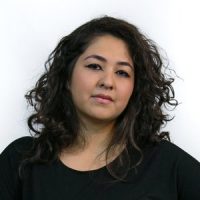
Andrea Iaroc. Courtesy CORAI Project.
JTP: Have you attended CAA conferences in the past? What did you think?
AI: Yes. In 2012 I attended the 100th conference in Los Angeles. It was a big deal.
Back then, I was just coming out of five years of research for my thesis on Jewish art, specifically iconography. I looked for a relevant session and when I went, the organizer said it had taken them 16 years to get CAA to have a session on Jewish art. That it took them 16 years was disappointing, but there we were.
There were talks already of having another Jewish session in 2013 and now I can see that things have changed. The way that the conferences look now five years later is different.
Back then I went to a Pre-Columbian session where you had all these folks who, yes, of course, are excellent at their research profession and uphold conservation and believe in the return of a lot of these items to their countries. But at the same time I felt, “Really, you couldn’t find one Latin American professor that could talk about this? Just one?” You have all these folks that are white American and Canadian and they’re telling you about your heritage—it feels really strange.
When you look at [the conference sessions] now, the layout in terms of the list of people who are talking and where they come from and the sessions—it’s much better.
JTP: That’s good to know. I’ve been involved with the organization for less time than a lot of its members, including you, so I’m always curious to ask people. I think energy apart from the conference is also really important, making sure that people feel supported not just when they’re in one place together.
AI: Exactly.
JTP: Do you have suggestions for organizations besides CORAI that people should be following?
AI: There’s Art History That. It’s run by two women (Karen J. Leader and Amy K. Hamlin) and sometimes they post their own writings. They gave us our first Facebook shout out for our first grant. They’re very supportive about anything that’s changing in art history, the paradigms, the way that we even talk about women sometimes. In 2017 when you go to an Art History 101 class, women are still muses, but we’re not the artists. We’re still not taken into account as having a genius, especially when we’re talking about classics. The way that we talk—that language needs to be changed.
There’s also Smarthistory. They are from New York and they offer free resources for art history.
Material Collective, you may have heard of it because it’s connected to Art History Teaching Resources. They’re both connected and even have this big group of medievalists who are trying to fight the white supremacist narrative.
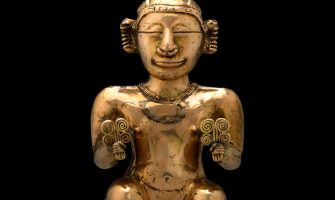
A piece featured in Smarthistory’s “South America before European colonization” section. Hands up close (detail), Seated Female Poporo, c. 500 B.C.E. – 700 C.E. Early Quimbaya, tumbaga (gold alloy), Colombia © The Trustees of the British Museum. Courtesy Smarthistory.
JTP: Excellent, thanks! What is the focus of your own research? You’ve mentioned it, but just to reiterate.
AI: Jewish art and iconography was my original focus, but because of it I’ve switched to cultural hybridity art.
JTP: Oh, interesting.
AI: Cultural hybridity includes artists who, because of the way our world has different heritages, draw inspiration from their mixed background. For instance, I had been researching contemporary Jewish artists and I ran across a work from Maya Escobar, who is from Missouri. Her dad is from Guatemala, he’s of Mayan ancestry, and her mom is Jewish, Ashkenazi, and so she made a tallit, a Jewish prayer shawl, using Mayan weaving techniques. That fusion of tradition—I’m very interested in it.
JTP: Do you think artists and art historians can change the world?
AI: Because I think that everything is connected, I always say art history does not exist in a vacuum.
JTP: I agree.
AI: Everything that’s happening scientifically, economically—it’s reflected. You’re going to see it in 50 years when you look back at art, you’re going to see it. Can it change the world? It can help change the world because humanities play a crucial role. The humanities help you see the world in a different way. They help your critical thinking skills and help you read humans. It helps you build community.
News from the Art and Academic Worlds
posted by CAA — January 17, 2018
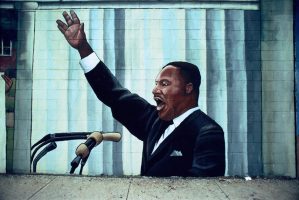
MLK Jr. mural at Callowhill and 2nd Avenue, Gift of Life, Philadelphia, 2009. Photo: Camilo José Vergara
Each week CAA News summarizes articles, published around the web, that CAA members may find interesting and useful in their professional and creative lives.
A Wall Street Giant Makes a $75 Million Bet on Academic Philosophy
The gift appears to be the largest by far to a philosophy department anywhere in the world. (New York Times)
Google App Goes Viral Making an Art Out of Matching Faces to Paintings
The Google Arts & Culture app tapped into the zeitgeist over the weekend, allowing social media users to share their doppelgangers from art history. (NPR)
Artists, Museum Directors, Scholars Voice Concern about Documenta’s Future
An open letter calls for business chief Annette Kulenkampff’s reinstatement and a new budget plan. (The Art Newspaper)
Why These 6 Artists Destroyed Their Own Art
Six stories of artists who chose to destroy their own art, including Michelangelo, Monet, and Georgia O’Keeffe. (Artsy)
The Martin Luther King Jr. Murals of America
Since the 1970s, Camilo José Vergara has documented hand-painted images of the civil rights leader across the US. (Citylab)
Helen Maudsley on How to Read Art: “Learn to Do What the Picture Tells You”
After a career spanning seven decades, the 90-year-old Australian artist expects her audience to put in an effort. (The Guardian)
Affiliated Society News for January 2018
posted by CAA — January 16, 2018
Affiliated Society News shares the new and exciting things CAA’s affiliated organizations are working on including activities, awards, publications, conferences, and exhibitions. For more information on Affiliated Societies, click here.
Association of Academic Museums and Galleries
We hope to release 2018 Annual Conference registration, hotel and lodging information, and scholarship applications within the next month. Stay tuned for announcements via membership emails, the website, social media, and the AAMG listserv!
In the meantime, save the date!
June 21 – 24, 2018
Lowe Art Museum (University of Miami)
SECAC
SECAC 2017: 73rd ANNUAL CONFERENCE:
In October, SECAC met for the 73rd time in Columbus, Ohio, hosted by the Columbus College of Art and Design. One hundred and seven sessions were held, and 502 members representing 277 institutions attended. In its seventh year, participation in the SECAC mentoring program nearly doubled with 50 members meeting as mentors and mentees. Highlights of the conference included the SECAC 2017 Annual Juried Exhibition at CCAD’s Beeler Gallery and a keynote address at the Columbus Museum of Art by Tyree Guyton and Jenenne Whitfield of the Heidelberg Project.
At the annual business meeting SECAC President Jason Guynes of the University of Alabama introduced new members of the Board of Directors: Georgia, Jeff Schmuki, Georgia Southern University; South Carolina, Sarah Archino, Furman University; Virginia, Jennifer Anderson, Hollins University; West Virginia, Heather Stark (continuing), Marshall University; and At Large #2 Al Denyer (continuing), University of Utah. A. Lawrence Jenkens of the University of North Carolina at Greensboro was unanimously elected 1st Vice President of SECAC, a post he will hold for three years before becoming President. A Constitutional Amendment to add a third At-Large position to the SECAC Board was carried unanimously. At the end of the meeting, President Guynes passed the gavel to 1st Vice President and President-Elect Sandra J. Reed of Marshall University who will serve as SECAC President for three years.
SECAC 2018 will be hosted by the University of Alabama at Birmingham, October 17-20. A call for session proposals is now on the SECAC website, www.secacart.org. Calls for presentations, juried exhibition entries, and award nominations will be published on the website in early 2018.
AWARDS PRESENTED AT SECAC 2017
The SECAC Artist’s Fellowship, a $5,000 prize, was awarded to Stacey M. Holloway, Assistant Professor of Sculpture at the University of Alabama at Birmingham. Her proposed exhibition, Not to Be Otherwise, will be on view at SECAC 2018 in Birmingham, Alabama.
Ashley Elston, Assistant Professor of Art History, Berea College, won the fourth annual William R. Levin Award, a $5,000 prize, for her project Layered Media in the Sacred Art of Early Modern Italy.
The 2017 SECAC Award for Excellence in Teaching was awarded to Beauvais Lyons, Professor of Art at the University of Wisconsin-Green Bay.
The 2017 SECAC Award for Excellence in Scholarly Research and Publication was awarded to Christine Filippone, Associate Professor in Art History at Millersville University of Pennsylvania, for Science, Technology, and Utopias: Women Artists and Cold War America, Routledge Press, 2017.
The Awards Committee recognized two winners of the 2017 SECAC Award for Outstanding Artistic Achievement: Reni Gower, Professor in the Painting and Printmaking Department at Virginia Commonwealth University, and Carol Prusa, Professor of Painting and Drawing at Florida Atlantic University.
The 2017 SECAC Award for Outstanding Professional Achievement in Graphic Design was awarded to Meaghan Dee, Assistant Professor and Chair of Visual Communication Design at Virginia Tech.
The Awards Committee recognized two winners of the 2017 SECAC Award for Outstanding Exhibition and Catalogue of Historical Materials: the Georgia Museum of Art (University of Georgia) for Icon of Modernism: Representing the Brooklyn Bridge, 1883–1950, curated by Sarah Kate Gillespie; and Edward Irvine, Associate Professor of Art at the University of North Carolina Wilmington for Art From Flour: Barrel to Bag, at the Cameron Art Museum, Wilmington, North Carolina.
The 2017 SECAC Award for Outstanding Exhibition and Catalogue of Contemporary Materials was awarded to the Georgia Museum of Art (University of Georgia) for Paper in Profile: Mixografia and Taller de Gráfica Mexicana.
Nine graduate students received Gulnar Bosch Travel Awards in the amount of $220: Cyndy Epps, Georgia Southern University; Kimiko Matsumura, Rutgers University; Kathleen Pierce, Rutgers University; Daniel Ralston, Columbia University; Courtney N. Ryan, Georgia Southern University; Florencia San Martin, Rutgers University; William J. Simmons, University of Southern California; Madison Treece, University of California, Santa Cruz; and Angela Whitlock, Institute for Doctoral Studies in the Visual Arts.
Juror Tyler Cann, Curator of Contemporary Art at the Columbus Museum of Art, selected three prize winners for the SECAC 2017 Annual Juried Exhibition: Best in Show, Brooks Dierdorff, University of Central Florida, for What Else Do You Need?, Inkjet on vinyl mesh, stained glass, styrofoam coolers, 42” x 14” x 11”; Second Prize, Erica Mendoza, University of Tennessee Knoxville, for #WasterHerTim-2013to2017, Hand-embroidered ex-boyfriend clothing, approximately 91” x 63”; and Third Prize, Kofi Opoku, West Virginia University, for Face of Homelessness (Chuck), Video, 5’ 47”. Prizes were $1,500, $750, and $500, respectively.
The Art Libraries Society of North America (ARLIS/NA)
- The Art Libraries Society of North America (ARLIS/NA) is sponsoring a session the 2018 CAA conference in Los Angeles entitled “Engaging the Iterative: Pedagogical Experiments across Art and Design Disciplines.”
- The 46th Annual Conference of the Art Libraries Society of North America (ARLIS/NA) will be held in New York City at the New York Hilton Midtown from February 25 through March 1, 2018. This year’s conference, which is the preeminent event for the ARLIS/NA organization of art and visual information professionals, carries the theme Out of Bounds, and emphasizes sessions that expand the boundaries of art librarianship, featuring speakers who borrow ideas from outside the library profession to solve problems, spark new initiatives, or broaden audiences for library activities.
- In collaboration with the Art Libraries Society of North America (ARLIS/NA) the Sotheby’s Research Institute is once again sponsoring a research award for students writing on the subjects of art collecting or the art market http://www.sothebysinstitute.com/news-and-events/news/call-for-student-paper-submissions-arlis-award/ . This generous award of $3000 to the winner (individual or group effort) and $1000 to the assisting library will be presented at the 2018 ARLIS conference in New York.
Association for Critical Race Art History (ACRAH)
The Association for Critical Race Art History’s Bibliographic resource launched on January 9, 2017, and received over 1000 hits on the first day. In conjunction with the publication of the bibliography, reading groups were formed in the San Francisco Bay Area, Boston, New York, and Washington, D.C. to bring together art historians engaged with issues of the representation of race and ethnicity and their histories. To date, 42 people have participated in the reading groups, which have covered a wide array of topics including hybridity, empire, borders, primitivisms, and the contemporary status of identity politics. The reading groups were organized by Caitlin Beach (NY), Layla Bermeo (Boston), Margarita Karasoulas (Washington, D.C.), Marci Kwon (Bay Area), and Sean Nesselrode Moncada (NY). The organizers would like to thank Jacqueline Francis and Camara Dia Holloway, co-founders of the Association for Critical Race Art History, for their support and guidance in this endeavor.
Association for Latin American Art (ALAA)
The Association for Latin American Art (ALAA) is pleased to announce our Emerging Scholars of Latin American Art sponsored session at the upcoming College Art Association Conference. This session showcases the scholarship of graduate students and early career scholars of Latin American art, from the pre-Columbian to contemporary period. The session, chaired by Lisa Trever (UC-Berkeley) and Elena FitzPatrick Sifford (Louisiana State University), takes place on Thursday, February 22 from 10:30 am to 12:00 pm in room 402 and includes the following papers:
“Singular Plural: Serials, Rulership, and Time in the Architectural Ornament of Teotihuacan, Mexico” (Trent Barnes, Harvard University)
“‘These things do not exist’: Painting Grotesques in Sixteenth-Century New Spain” (Savannah Esquivel, University of Chicago)
“Migrant Constructions: Mahjar Monuments and the Crafting of Transnational Identities in Modern Argentina (1910–1955)” (Caroline “Olivia” M. Wolf, Rice University).
Renaissance Society of America
The Renaissance Society of America is holding its Annual Meeting in New Orleans on 22-24 March 2018. More than 200 of the 550 sessions at the conference feature topics relating to art and architecture, 1300-1700. See the RSA New Orleans web page for more information.
Historians of German, Scandinavian, and Central European Art and Architecture (HGSCEA)
The Board recently awarded travel stipends to two members of HGSCEA, Tomasz Grusiecki and Max Koss, to help defray the costs of their participation in CAA’s annual conference this coming February. The Board is also deliberating on the submissions to this year’s HGSCEA Emerging Scholars Prize competition. The winner will be announced at the reception and dinner in Los Angeles on Thursday, February 22, from 7 to 9 p.m. As always, the dinner is free to current members, who should mark their calendars if they plan to attend. An invitation with more details will be sent soon.
HGSCEA’s sponsored session at the annual conference, “Critical Race Art Histories in Germany, Scandinavia, and Central Europe,” is being chaired by Allison Morehead on Saturday, February 24, from 2:00-3:30 p.m. Rebecca Houze, Patricia Berman, Bart Pushaw, and Kristin Schroeder will read papers on Hungarian, Nordic, and German art and design. For more information, go to the HGSCEA website (http://hgscea.org/) and the conference website (http://conference.collegeart.org/programs/critical-race-art-histories-in-germany-scandinavia-and-central-europe/)
The annual business meeting is scheduled for Thursday, February 22. It will take place in Room 506 of the Convention Center from 12:30-1:30 p.m. Members are welcome to attend.
The New Media Caucus
The New Media Caucus is pleased to welcome our newly elected board members Rene Ferro (Chair of the Events and Exhibitions Committee), Jim Jeffers, (Treasurer), Jessye McDowell (Chair of the Communications Committee), Nadav Assor, Stephanie Tripp, Carrie Ida Edinger, Patrick Lichty, Jennifer Zayela, Byron Rich, Johanna Gosse and Liat Berdugo.
We also thank Bill Miller and Joyce Rudinsky for their years of invaluable leadership to our organization and Carlos Rosas, Meredith Hoy and Daniel Temkin for their service over the years as members of the Board.
As part of the Annual CAA conference, the New Media Caucus will be hosting multiple panels, workshops and our annual Member Showcase. You can find the New Media Caucus events information at http://www.newmediacaucus.org/2018-caa-los-angeles-events/.
National Council of Arts Administrators (NCAA)
National Council of Arts Administrators (NCAA) Activities at CAA-LA 2018 include our NCAA-CAA Affiliate Session: Transforming Communities Through the Arts, (Thursday, February 22, 10:30a.m.-12:00 p.m.) and the annual NCAA Reception (Thursday, February 22, 5–7 p.m., rm. tba). NCAA welcomes new and current members, and all interested parties. Please join us.
2018 NCAA Annual Conference: Purposeful Relationships: transforming communities through art and design, will be hosted by the Kendall College of Art and Design of Ferris University, Grand Rapids, MI, September 26-29, 2018. Registration available online in late spring 2018 at www.ncaaarts.org
New NCAA Board Members and Officers:
NCAA President: Lynne Allen, Boston University, Treasurer: Cathy Pagani, University of Alabama, Secretary: Peter Chametzky, University of South Carolina
New NCAA Board Members: Colin Blakely, University of Arizona, Jade Jewett, California State University, Fullerton, Charles Kanwishcher, Bowling Green State University
Historians of Netherlandish Art
HNA events at the College Art Association annual Conference, Los Angeles, February 21-24, 2018:
This year our HNA sponsored session, “All in the Family: Northern European Artistic Dynasties, CA. 1350-1750 will take place on Wednesday, February 21st, from 4-5:30 pm in Room 404A at the LA Convention Center.
Join us for the yearly HNA reception on Friday February 23rd, from 5:30-7 pm. in the San Bernadino Room at the Westin Bonaventure Hotel.
HNA Conference, Ghent, 2018
Registration is open for the quadrennial HNA conference in Ghent, May 23-26, 2018: https://hnanews.org/hna-conference-ghent-2018
We are pleased to announce 3 new board members:
Stephanie Porras, Assistant Professor at Tulane University
Marisa Bass, Assistant Professor and Director of Undergraduate Studies in the History of Art Department of Yale University
Freyda Spira, Associate Curator of Northern Renaissance and Baroque works on paper at the Metropolitan Museum of Art
and our new HNA Administrator:
Caroline Fowler, A.W. Mellon Postdoctoral Fellow, Yale University
Websites:
Don’t forget to check out our newly launched websites including HNAR, our online review of books, where past reviews will be available. The final print issue of the HNA Newsletter and Review of Books was published in November 2017. Issues produced since May 2002 are now available in pdf format on the site for viewing and download. Please take a look: https://hnanews.org, https://jhna.org, https://hnanews.org/hnar, and https://hnanews.org/hnar/archive.
Publication opportunity:
The next formal deadline for submission of articles to the Journal of Historians of Netherlandish Art (jhna.org) is March 1, 2018 (for publication in 2018 or 2019), although we welcome submissions at any time.
Society of Architectural Historians
Early registration is open for the Society of Architectural Historians’ 71st Annual International Conference in Saint Paul, Minnesota, April 18–22, 2018. Architectural and art historians, architects, museum professionals, and preservationists from around the world will convene at the Saint Paul RiverCentre to present new research on the history of the built environment and explore the architecture of Saint Paul. Roundtable discussions, workshops, networking receptions, keynote talks, SAH’s annual awards ceremony, and public architecture tours in the Minneapolis–Saint Paul region will supplement the program. Early registration ends February 20. Tours-only and public events registration opens on February 21. Visit www.sah.org/2018.
SAH is accepting session proposals for its 72nd Annual International Conference in Providence, Rhode Island, April 24–28, 2019. Since the principal purpose of the SAH annual conference is to inform attendees of the general state of research in architectural history and related disciplines, session proposals covering every time period and all aspects of the built environment, including landscape and urban history, are encouraged. SAH membership is not required to submit a proposal; however, you will be required to join SAH if your proposal is accepted. The submission deadline is January 16, 2018. Visit www.sah.org/2019.
SAH has partnered with the Global Architectural History Teaching Collaborative (GAHTC) to offer Research-to-Teaching Grants and Field Seminar Travel Grants. These new grants are part of the GAHTC’s nearly $500,000 in funding to build new content for its free, digital platform of teaching materials. Learn more at www.gahtc.org/grants.
European Postwar and Contemporary Art Forum (EPCAF)
A new group of counselors has joined EPCAF. Their bios, along with those of the new director of research and president are below. Karen Kurczynski’s review of the conference, “Multiple Modernisms: A Symposium on Globalism in Postwar Art,” was recently published at http://epcaf.org/reviews/
President:
Lily Woodruff is Assistant Professor of Art History at Michigan State University. Her first book, Disordering the Establishment: Participatory Art and Institutional Critique in France, 1958-1981 focuses on the Groupe de Recherche d’Art Visuel, Daniel Buren, André Cadere, and the Collectif d’Art Sociologique.
Director of Research:
Emmanuel Guy is Assistant Professor of Art and Design History at The New School, Parsons Paris. His book focuses on Guy Debord’s Game of War, and he curated among other exhibitions, “Guy Debord. Un Art de la Guerre” at the Bibliothèque nationale de France in 2013.
Counselors:
Amy Bryzgel is Senior Lecturer in Film and Visual Culture at the University of Aberdeen in Scotland. She is the author of Performance art in Eastern Europe since 1960, and Performing the East: Performance Art in Russia, Latvia and Poland Since 1980.
Brianne Cohen is Assistant Professor of Contemporary Art History at the University of Colorado, Boulder. Her book, Preventive Publics: Contemporary Art and the Idea of Europe, examines the art of Harun Farocki, Thomas Hirschhorn, and the collective Henry VIII’s Wives.
Liam Considine is Visiting Assistant Professor of art history at Pratt Institute. His book, New Realisms: Pop and Politics in France, 1962-1968, examines the impact of Pop art in France across painting, cinema and graphic design during the 1960s.
Sophie Cras is Maître de conférences at Université Paris 1 Panthéon-Sorbonne. An English translation of her book, L’économie à l’épreuve de l’art. Art et capitalisme dans les années 1960.
Deborah Laks is Scientific Coordinator at the Deutsches Forum für Kunstgeschichte, and teaches at the Panthéon-Sorbonne University, Sciences po, and École du Louvre. She is the author of Des déchets pour mémoire. L’utilisation de matériaux de récupération par les nouveaux réalistes (1955-1975).
Jasmina Tumbas is Assistant Professor in the Department of Art at the University at Buffalo. Her first book is titled The Erotics of Dictatorship: Art, Sex, and Politics under Yugoslav Socialism.
FATE (Foundations in Art: Theory and Education)
Upcoming for CAA 2018: An Inclusion and Empathy Roundtable discussion and podcasting session will be hosted during FATE’s Business Meeting at the conference: Th, Feb 22, 12:30 – 1:30p, Rm 402A, LA Convention Center.
02/22/2018: 6:00PM–7:30PM, Room 409A: “Let’s Dance, But Don’t Call Me Baby: Dialogue, Empathy, and Inclusion in the Classroom and Beyond”
FATE’s CAA Affiliate Representative, Naomi J. Falk, and Richard Moninski, will co-chair FATE’s Affiliated Society session. Feeling welcome, acknowledged, and heard encourages learning. Fostering inclusiveness and empathy on behalf of minority students legitimizes perspectives. Examples of readings, projects, tools, and exercises for building inclusive, encouraging, and productive dialogues included. More info? Please contact: Naomi J. Falk, naomijfalk@gmail.com
Feb 10, 2018: FATE Regional Event: Skill Swap Workshop @ SHSU, 10:00am – 5:00pm at Sam Houston State University, WASH (Workshop in Art Studio + History), 2220 Ave. M, Huntsville, TX, 77340. $20.00 covers breakfast, zine and demo materials, lunch, and takeaway information. Coordinators: Jessica Simorte & Valerie Powell, Register by Jan 10: jessicasimorte@hotmail.com
Other Regional events, incl. Apr 2018 in Columbus: http://www.foundations-art.org/regional-events
Positive Space podcast: http://www.foundations-art.org/positive-space-podcast
Episode 21, features Jessica Mongeon, Visiting Assistant Professor of Studio Foundations at Arkansas Tech University, discusses student habits, using technology in the classroom & strategies for creating inclusive learning environments at a time when social & political issues often alienate many. Unpacking trends in foundations pedagogy, Emily Ward Bivens, professor of Time-Based Art at the University of Tennessee, discuss the benefit of introducing students to performative activities, mentorship and the challenge/adventure involved in juggling the role of artist, educator, and administrator. Recent episodes also include Colby Jennings, Heather Szatmary, and Chung-Fan Chang.
Membership: Starting the 2018/2019 membership period, FATE has made changes to the Individual Membership fees including a new Adjunct Faculty Membership rate for part-time and contingent faculty members: http://www.foundations-art.org/membership
International Sculpture Center
The 2018 International Sculpture Conference will be held in Philadelphia, PA from October 25-28, 2018. The Call for Panels will open in January 2018. We will be seeking a diverse program with a wide range of topics in contemporary sculpture. For updates and to apply, visit www.sculpture.org/philly2018.
Tickets to the Lifetime Achievement Award Gala honoring Alice Aycock and Betye Saar are on sale. The gala will be held on April 18, 2018 at Tribeca Rooftop, NY, NY. For more information, and to purchase tickets visit www.sculpture.org/aycocksaar, or contact the ISC events department at events@sculpture.org.
CAA Statement on Recent Remarks by President Trump
posted by CAA — January 16, 2018
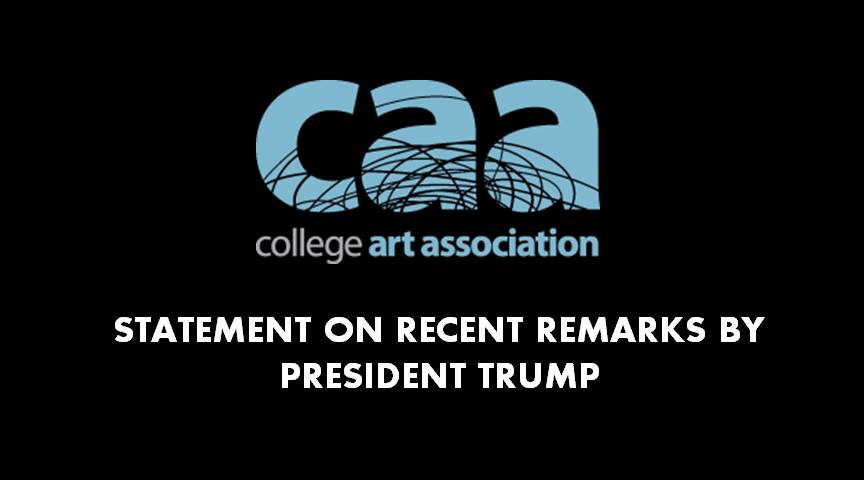
CAA, the largest professional association supporting art historians and visual artists, strongly supports the statement of the African Studies Association, denouncing statements made by President Donald J. Trump, which characterize African and Caribbean countries as “shithole countries.” CAA celebrates the important artists, scholars, curators, and art critics from these countries and their contributions to the arts both in the United States and internationally. In particular, CAA supports ASA’s statement: “It is shocking that such crude racist expressions of xenophobia are now part and parcel of executive office discourse. Not only do President Trump’s words disparage the people of an entire continent, on issues of immigration, they defy reality.”
“Whether it is funding for the arts and humanities, clean water and environmental regulations, fair hiring practices or gender and racial inclusion, CAA has a long history of taking positions and expressing values which support the field, as well as society,” said Executive Director Hunter O’Hanian. “The individual occupying the White House has embraced sexist, racist, and mendacious viewpoints over and over. He has shown concern only with enriching himself, sacrificing human decency and the good will of this country on the global stage.”
Read more: Statement by the ASA Board of Directors regarding President Trump’s Remarks
Jenn Proctor and Jon Rattner
posted by CAA — January 15, 2018
The weekly CAA Conversations Podcast continues the vibrant discussions initiated at our Annual Conference. Listen in each week as educators explore arts and pedagogy, tackling everything from the day-to-day grind to the big, universal questions of the field.
This week, Jenn Proctor, filmmaker and associate professor in Journalism and Screen Studies at the University of Michigan-Dearborn, and Jonathan Rattner, filmmaker and assistant professor in the Cinema & Media Arts Program and the Art Department at Vanderbilt University, discuss teaching film and video production.
New in caa.reviews
posted by CAA — January 11, 2018
Julia K. Murray discusses Geo-Narratives of a Filial Son: The Paintings and Travel Diaries of Huang Xiangjian (1609–1673) by Elizabeth Kindall. Read the full review at caa.reviews.
Kara Fiedorek reviews In the Wake: Japanese Photographers Respond to 3/11 by Anne Nishimura Morse and Anne E. Havinga. Read the full review at caa.reviews.
Adrian Anagnost writes about Concrete Cuba: Cuban Geometric Abstraction from the 1950s by Abigail McEwen and Susanna Temkin. Read the full review at caa.reviews.
David G. Wilkins discusses The Noisy Renaissance: Sound, Architecture, and Florentine Urban Life by Niall Atkinson. Read the full review at caa.reviews.
Carol Troyen writes on The Evolution of Taste in American Collecting by René Brimo. Read the full review at caa.reviews.
News from the Art and Academic Worlds
posted by CAA — January 10, 2018
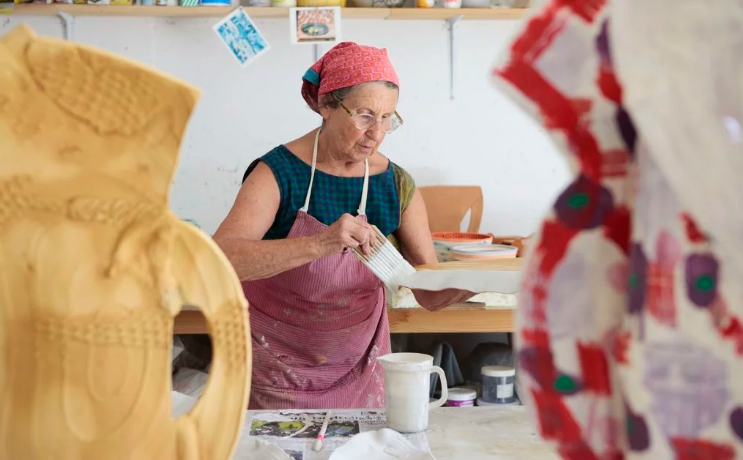
Betty Woodman in her studio. The sculptor passed away this week at the age of 87. Photo: Stefano Porcinai, courtesy Salon 94 via artnet News.
Each week CAA News summarizes articles, published around the web, that CAA members may find interesting and useful in their professional and creative lives.
Backlash Building against La Salle University over Art Sale
The American Alliance of Museums and the Association of Art Museum Directors condemned a plan by La Salle University to sell 46 artworks from its collection. (Philadelphia Inquirer)
The Met Museum Is Changing Its Pay-As-You-Wish Admission Policy
Beginning March 1, The Metropolitan Museum of Art will charge a mandatory admission fee to visitors who do not live in New York State. (Huffington Post)
Betty Woodman, Visionary Sculptor of Ceramic Vessels, Has Died at 87
Woodman had been working with her chosen medium since her high school years, in the 1940s. (artnet News)
First Center for Empathy and Art Launched in Minneapolis
The center will bring together researchers, artists, historians and philosophers to learn how art museums can promote empathy and understanding. (Smithsonian Magazine)
As Flow of Foreign Students Wanes, US Universities Feel the Sting
The downturn follows a decade of explosive growth in foreign student enrollment. (New York Times)
Why the Magritte Foundation Still Authenticates Work, as Other Foundations Back Away
The Magritte Foundation was founded in 1998 in Brussels to safeguard the work and reputation of the artist. (Artsy)
CWA Picks for December 2017/January 2018
posted by CAA — January 09, 2018
CAA’s Committee on Women in the Arts selects the best in feminist art and scholarship to share with CAA members on a monthly basis. After this combination post, updates will resume monthly.
December Picks
Unfinished Business: Perspectives on art and feminism
December 15, 2017–March 25, 2018
Australian Centre for Contemporary Art
111 Sturt Street
Southbank Victoria
Melbourne, Australia
In the newest exhibition at the Australian Centre for Contemporary Art, Unfinished Business: Perspectives on art and feminist critical and underrepresented practices and debates are examined within contemporary Australian art and society. New commissions, recent works and historical projects are presented from art historians, artist, and theorists from the 1970s to the present.
The exhibition includes painting, performance, photography, film, community engagement and cultural activism to name several mediums. Focusing on the “dynamic formal invention and social engagement of feminist artists,” the exhibit explores gender identity, representation, and intersectional politics through performance, text and media technologies, humor and critique.”
“Asking why feminism is still relevant, necessary and critical, Unfinished Business explores trans-generational legacies, inheritances and shifts, alongside contemporary conditions and concerns – to stimulate new debates and discussions around the ‘unfinished business’ of feminism today.”
November 13, 2017–February 16, 2018
Artist’s Lecture & Reception: January 17, 5 – 8 pm
The Kniznick Gallery
Brandeis University
Women’s Studies Research Center
Epstein Building
515 South Street, Waltham, MA
In this solo exhibition by Clarity Haynes at the Kniznick Gallery at Brandeis University, large-scale painted portraits depicts the history of displaying social power through the painted portrait.
In Haynes’s paintings she features the torso as the site for storytelling, paying homage to women, trans and gender nonconforming people. “”Tattoos, scars, evidence of illness, aging, exposure to sun, childbirth, surgeries, synthetic hormones, moles, birthmarks, stretch marks and veins, all tell a story of a body’s life, and Haynes seeks to portray them larger-than-life and divine.”
The name of the exhibition, Baba Na Gig, or “Old Woman of the Breasts”, is in honor of Baba Yaga, the old woman goddess of Eastern Europe, and the goddess Sheela Na-Gig, or “Sheela of the Breasts.”
In acknowledging the social history and social power of the portrait, Haynes seeks to redistributes power to people outside of cultural norms. “Her years-long process of making each work contributes to a reverence for the way bodies change and redefine what power can be.”
In addition to the artist’s lecture on January 17, 2017, the gallery will hold an event with art historian and museum educator, Annie Storr. Storr will lead an “Exercise for the Quiet Eye” on January 30, 2017 to encourage patient reflection, appreciation, and interpretation.
Solidary & Solitary: The Joyner/Giuffrida Collection
September 30, 2017–January 21, 2018
Ogden Museum of Southern Art
925 Camp Street
New Orleans, LA
In the exhibition Soliday & Solitary at the Ogden Museum of Southern Art the history of art is reinterpreted through African-American artists from the 1940s through the present. The Joyner/Giuffrida collection is primarily focused on abstract art, a “meaningful political focus, rather than stylistic preference.
“For black artists, abstraction is charged with the refusal of representation that is socially dictated, both by racist stereotypes of the dominant culture, and the pressure from within the black community to create positive imagery. Abstract art as a practice embodies the possibility of individual freedom and autonomy, even within larger social identities.”
Among the artists in the exhibition are sonic and visual artist Jennie C. Jones, painter Lynette Yiadom-Boakye, painter and sculptor Shinique Smith along with Kevin Beasley, Mark Bradford, Leonardo Drew, Melvin Edwards, Charles Gaines, Sam Gilliam, Norman Lewis, Glenn Ligon, Serge Alain Nitegeka, Tavares Strachan, and Jack Whitten.
[closed] October 26–December 16
Blum & Poe
2727 S. La Cienega Blvd.
Los Angeles, CA 90034
“Lynda Benglis’ legendary practice began in 1960s New York City, her commitment to merging content and form, subverting the paradigms of Minimalism and Modernism, established her formidable role in contemporary art history as a leader in the Post Minimalism movement. Her iconic works have been coined “frozen gestures”—referencing the body and the landscape, sexual and gender politics—realized in poured latex, wax, polyurethane, ceramics, bronze, paper, video, glass, neon, and more.
Spanning two levels of exhibition space and including the outdoor gardens, here Benglis presents works from a sculptural practice that engenders hybrid compositions, embracing the subjective touch of the artist’s hand and the inextricable link between process, material, and form. Each room features a distinct body of work, showcasing the artist’s multifarious range—including glazed ceramics; examples from her bronze fountain series; large-scale biomorphic aluminum sculptures; a constellation of recent paper wall works; and the eleven-foot phosphorescent cast polyurethane HILLS AND CLOUDS (2014).”
July 8, 2017–January 14, 2018
Museum of Contempoary Art
220 E. Chicago Ave
Chicago, IL 60611
“Woman with a Camera presents photographs by 14 women artists who come from a diverse set of backgrounds and generations, and address various artistic concerns. This intimate show includes established masters of the medium—such as Catherine Opie, Laurie Simmons, and Carrie Mae Weems—alongside exceptional younger artists—including Anne Collier, Xaviera Simmons, and Mickalene Thomas—who use photography to explore facets of politics, history, and identity. Though their practices are disparate, their works draw on three central themes in photography: rendering the human figure, capturing public or private spaces, and commenting on our media-saturated culture.”
Although essentially a show acknowledging the gifts of particular collectors (Sandra and Jack Guthman), the works provide an opportunity to reflect on the heterogeneous practices of a generationally diverse array of artists. Other artists represented: Emily Jacir, Michele Abeles, Marina Abramović, Sophie Calle, Leslie Hewitt, Melanie Schiff, Eve Sussman/Rufus Corporation, and Anna von Hausswolff.
November 11, 2017–January 13, 2018
Kohn Gallery
1227 North Highland Ave
Los Angeles, CA 90038
“A group exhibition featuring seventeen contemporary artists who are revolutionizing the way we visualize conventional gender as exclusively male or female. Through painting, a medium that has traditionally embraced this binary, these artists are pushing the genre in new, unprecedented directions, challenging the ways in which paintings can be used to deconstruct and rewrite conventional notions of personal identity. The exhibition highlights the inter-blending of traditional and figurative abstraction as the foundation for more fluid and inclusive expressions of identity, engendering a new visual pronoun.”
The exhibition attempts to get “beyond the binary” of figurative representation, and the visual hailing of particularly gendered bodies. Painting is the medium of choice, and works like Emily Mae Smith’s Abyss, 2017, challenge easy associations with masculine or feminine imagery. Other works in the show, such as Christina Quarles’s paintings, which are filled with bendy and androgynous bodies, highlight how the figurative can be transformed through formal applications of paint—itself a sometimes viscous and sticky goo.
Artists included: Mequitta Ahuja, Firelei Báez, Hernan Bas, Zoë Charlton, Jonathan Lyndon Chase, Nicole Eisenman, Natalie Frank, Heidi Hahn, Loie Hollowell, Sadie Laska, Jesse Mockrin, Jennifer Packer, Christina Quarles, Nathaniel Mary Quinn, Tschabalala Self, Emily Mae Smith, Jansson Stegner
January Picks
Magnetic Fields: Expanding American Abstraction, 1960s to Today
October 13, 2017–January 21, 2018
January 17, 2018: Gallery Talk, Get the 411 on Abstraction
January 19, 2018: Artist’s Talk with Maren Hassinger
National Museum of Women in the Arts
1250 New York Ave NW
Washington, D.C.
The National Museum of Women in the Arts presents a look at abstract works by twenty-one black female artists. Magnetic Fields: Expanding American Abstraction 1960s to Today features artists born between 1891 and 1981, cutting across generations to unveil under-recognized leaders in abstraction.
“Artists in Magnetic Fields dispel the notion that figurative art is the only means for visualizing personal experience. The titles of their works and their construction methods evoke intense associations. Mary Lovelace O’Neal’s use of allusive titles, such as Racism is Like Rain, Either it’s Raining or it’s Gathering Somewhere (1993), informs the reading of her monumentally-scaled painting while Maren Hassinger similarly uses socio-politically inflected titles and materials—specifically New York Times newspapers—in her textural floor sculpture Wrenching News (2008).”
Artists presented in Magnetic Fields include Candida Alvarez, Betty Blayton, Chakaia Booker, Lilian Thomas Burwell, Nanette Carter, Barbara Chase-Riboud, Deborah Dancy, Abigail DeVille, Maren Hassinger, Jennie C. Jones, Evangeline “EJ” Montgomery, Mary Lovelace O’Neal, Howardena Pindell, Mavis Pusey, Shinique Smith, Gilda Snowden, Sylvia Snowden, Kianja Strobert, Alma Woodsey Thomas, Mildred Thompson, and Brenna Youngblood.
Exhibition programming includes a short gallery talk on Wednesday, January 17, 2018, exploring highlights with NMWA Senior Educator Adrienne L. Gayoso, as well as an in-depth artist’s talk with Maren Hassinger about her work, Wrenching News, created in response to Hurricane Katrina’s aftermath.
LSFF: Radical Softness Through a Haptic Lens: Barbara Hammer and Chick Strand + Q&A
January 13, 2018, 4pm, Cinema 1
The ICA
The Mall
London
The retrospective by the ICA Cinema of the work of experimental filmmakers Chick Strand, and Barbara Hammer, a pioneer of queer cinema, explore the idea of ‘radical softness’- “the power in being both abrasively feminine and openly vulnerable, subverting emotion from weakness to strength.”
“Thematically, my work deconstructs a cinema that often objectifies or limits women,” Barbara Hammer says on her website. “My work makes these invisible bodies and histories visible. As a lesbian artist, I found little existing representation, so I put lesbian life on this blank screen, leaving a cultural record for future generations.”
“Strand (1931-2009) played a vital role in the 1960s Bay Area filmmaking community both through her work and her involvement in the co-founding of Canyon Cinema—which would become the San Francisco Cinematheque—with friend Bruce Baillie in 1961. Strand also taught film for twenty-five years at Occidental College in Los Angeles, influencing a generation of filmmakers.” (http://hcl.harvard.edu/hfa/films/2016marmay/strand.html)
The screening will feature Dyketactics (1974, 4 mins), Superdyke Meets Madame X (1975, 20 mins) both by Barbara Hammer, and Soft Fictions by Chick Strand (1979, 54 mins).
January 21, 2018–June 3, 2018
Pasadena Museum of California Art
490 East Union Street
Pasadena, CA
In the exhibition, The Feminine Sublime, the Pasadena Museum of California Art presentes a counter-narrative “that upends previous ideas of the sublime in painting with a unique feminist perspective.”
“With their large-scale artworks, the artists situate the viewer within the annihilating and terrifying effects of global climate change, nuclear catastrophe, 9/11, consumerist environmental degradation, and even post-apocalyptic landscapes. Though they articulate ideas of dystopian insecurity, fragmentation, and collapse, all of the works paradoxically invoke transformation, transition, and the possibilities for painting to still promote the kind of skepticism instrumental for the renewal of human consciousness.”
Artists include Los Angeles-based painters Merion Estes, Yvette Gellis, Virginia Katz, Constance Mallison, and Marie Thibeault.
Esther Ferrer: All Variations are Valid, Including This One
October 26—February 25, 2018
Museo Nacional Centro de Arte Reina Sofia
Calle Santa Isabel, 52
Madrid, Spain
A member of the avant-garde performance-based group Zaj, Ferrer’s artistic output is experimental (ranging across many media) and focused (prime numbers and education are recurring themes). In this exhibition, which privileges archival materials and Ferrer’s installations alike, the Museo Reina Sofia gives the monographic treatment to an artist well-known in Spain, but underrecognized abroad.
One of the central figures in Spanish performance art, Ferrer’s engagement with the conceptual structures of chance and repetition are enduring concerns. This exhibition also gathers together a group of Ferrer’s theoretical writings and speeches in the accompanying catalog.
Polly Apflebaum: Dubuffet’s Feet My Hands
November 24, 2017—February 2, 2018
Frith Street Gallery
17-18 Golden Square
London
“This exhibition is the latest in a series of installations that incorporate hand-woven carpets, ceramics, and immersive colour. […] Curator Kate McNamara has noted that carpets are the logical conclusion of Apfelbaum’s longstanding engagement with the floor, with pliable supports, fabric and decorative art traditions.
“For this installation, Apfelbaum worked with weavers in Oaxaca, Mexico, where the Zapotec people have been weaving textiles for over 2,000 years. Entitled Dubuffet’s Feet, this floor work is based on a small drawing titled Footprints in the Sand by Jean Dubuffet from his 1948 sketchbook El Golea II, which the artist saw at the Museum of Modern Art, New York. Apfelbaum has translated the image into a series of hand-woven rugs, each depicting an enormous footprint of a figure who would be over 100 feet tall. There are four carpets, two with left feet and two with right, aligned as parallel pairs, implying the trace of two giants. While Apfelbaum’s carpets are woven in earth tones that may evoke the 1970s, they also correspond with the sand in which Dubuffet’s footprints may have been left, and thus the natural landscape […]
“The parallel series My Hands has evolved from Apfelbaum’s ongoing experiments with glazed ceramics. They take their inspiration from the ‘floating hand of God’ in the mosaics of the basilica of Sant’Apollinare Nuovo in Ravenna, which she visited during a residency at the American Academy in Rome in 2013. Apfelbaum was fascinated by this image of the disembodied hand as the symbol of creation and intervention. Apfelbaum has used her own hand as a template for these works, creating a relationship to the artist’s touch while also dealing with ideas about craft and making, from prehistoric times to children’s pre-school handprints […].”
Sexuality Stories
October 20, 2017—February 14, 2018
Guerrilla Girls: Graphic, 1985-2017
September 29, 2017—February 14, 2018
MASP
Av Paulista, 1578
São Paulo, Brazil
There’s something delicious about a Guerrilla Girls retrospective holding space with a much more broadly conceived exhibition on sexuality—as the group of anonymous gorilla-mask-wearing feminists have had much to say about sexuality (and the depiction of it) across art’s histories and in the contemporary moment. Staged in the museum Lina Bo Bardi built in 1968, these shows serve as counterpoints, with the Guerrilla Girls retrospective underlining the radicality of the team-curated collections exhibition, Sexuality Stories.
In one of the new works on display at MASP, the Guerrilla Girls update their famous Do Women Have To Be Naked… poster, this time addressing São Paulo’s Museum of Art (where 60% of the nudes are women, but only 6% of the artists are). The catalog for the exhibition does the important work of translating the Guerrilla Girls’ mostly text-based work into Portuguese. The exhibition is curated by Adriano Pedrosa, artistic director of MASP, and Camila Bechelany, curator of Latin American Art.
For Sexuality Stories Pedrosa and Bechelany curatorial efforts are combined with those of Lilia Schwarcz, adjunct curator of MASP stories, and Pablo León de la Barra. Together they have programmed a variety of solo shows in advance of this installation (the Guerrilla Girls exhibition is only one). The intent, according to the curators, is to affirm a “respect for the other, difference and artistic freedom.” In gathering together historical works from across MASP’s collections, as well as those from contemporary artists, Sexuality Stories addresses sexuality as one of the enduring concerns of representation.
Kirsten Olds and Heather Vinson
posted by CAA — January 08, 2018
The weekly CAA Conversations Podcast continues the vibrant discussions initiated at our Annual Conference. Listen in each week as educators explore arts and pedagogy, tackling everything from the day-to-day grind to the big, universal questions of the field.
This week, Kirsten Olds, associate professor of Art History at University of Tulsa, and Heather Vinson, visiting professor of Art History at Kalamazoo College, discuss diversity and inclusion in art history curricula.



